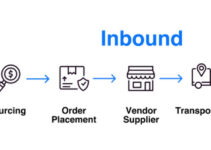According to an estimate, approximately 40% of SC businesses are optimizing their inventory through the latest technological tools and equipment. Many experts suggest that this percentage would continue to increase in the next few years. The focus of inventory optimization is to receive a sufficient amount of inventory to meet the predicted demands. Today, we’ll discuss the top 10 supply chain inventory optimization strategies.
What is Supply Chain Inventory Optimization?
Supply chain inventory optimization is the method of maintaining a sufficient amount of required inventory to meet the customer market demand. It allows you to decrease the logistic cost by avoiding the inventory problems like backorders, overstocking, and stockouts.
SC inventory optimization is a great strategy and it makes sure that you are efficiently managing the stock control by launching technological tools, strategies, and processes. Doing so would help you in the following ways;
- Optimization storage
- Better demand forecasting
- Tracking inventory in real-time
Supply Chain Inventory Optimization – 10 Strategies
Some of the top 10 supply chain inventory optimization strategies are as follows;
Inventory Management Tools
There are different types of inventory applications and software depending on the budgeting and size of your organization. You should select such a tool and application that would help you to track inventory in real-time. When you introduce an inventory management system, then it helps you in the following ways by synchronizing with SKUs;
- Unifying customers in one place
- Sales channel
- Fulfillment centers
- Viewing all the inventory
Some of the other features of the inventory management software are as follows;
- Preparing reports for tax sessions
- Automatic reorder notifications
- Demand forecasting
- Allowing merchants to track inventory in the distribution channel
- Built-in inventory optimization tool
Inventory Distribution in Warehouse
It is simple and easy to manage centralized inventory, it is significant to store your inventory closer and nearer to the demanded area. If you are strategically distributing SKUs (stock-keeping units) in various places, then you can efficiently deliver orders by decreasing the shipping cost. However, the centralized inventory software gives you access to the SKU performance insight of every location point relevant to the other by cumulative the historical order data.
Tracking SKUs
When you synchronize the SKUs with your inventory management system, then it helps you to manage products in your distribution network, update, and track. It allows you to avoid running out of inventory and overselling issues. However, if you are working with 3PLs (third-party logistics), then it becomes easier to manage inventory across the distribution network and manage inventory. Once you connect your store and synchronize your product, then you can do the following;
- Unifying the same product over the online stores
- Grouping different SKUs for promotions
- Establishing reorder points for every SKU based on the quantity
- Observing real-time inventory SKU
Auditing Inventory
Proper warehouse receiving methods and regular inventory audits allow you to track inventory efficiently and effectively. Closely analyzing and estimating the following elements would help you to make sure they aren’t causing mistakes;
- Depreciation cost
- Inventory shrinkage
- Storage
- Warehousing cost
It is time-consuming to conduct audits. But there are various applications and software that help brands and companies to automate the inventory analysis process. It is their capability to synchronize your online stores and e-commerce platforms with the inventory management system.
Launching Reorder Point Formula
It is significant to know how much minimum inventory you are holding, it would help you to know the optimum reorder time. The reorder limit would help you to make sure that you won’t keep excessive inventory. You should keep in mind the potential lead time like the following;
- Potential delays
- Storing inventory tine
- Warehouse receiving time
- Manufacturer
Reorder Point = Safety Stock + Demand in Lead Time
Finding Safety Stock
Buffer inventory or safety stock is the excess in-hand inventory that would help you in case of supply chain failure, increase in demand, and last-minute issues with suppliers. In order to estimate the optimum level of safety stock, it is significant to keep in mind the following;
- Average lead time
- Average daily usage
- Maximum lead time
- Maximum daily usage
Demand Forecasting
If you have got right demand forecasting tools and software, then it would help you to make informed decisions in terms of future periods of time, revenue, and sales. You should have access to the historical data when it comes to forecasting demand, it offers you sales trends and insight. It allows you to make accurate decisions with this data and achieve the following;
- Better customer experience
- Saving money
- Supply chain efficiency
Inventory forecasting helps you to take the following steps;
- Outsource fulfillment
- Renting more storage space
- Hiring employees
- Launching flash sales
Inventory budgeting
Many SC managers create inventory budgets and it would help you to be ready in advance before buying the inventory. The inventory budget comprises of total ownership cost to keep the inventory in hand during the annual account period. However, the budget includes the following costs and expenses;
- Redistribution cost
- Logistics and transportation cost
- Fixed operational cost
- Material cost
- Miscellaneous cost
Quality control Strategies
The quality control process would help you to make sure inventory quality has a direct attachment to business growth and customer satisfaction. Managers should create a checklist that offers all the methods and practices that would tell you to take stock of products and then move to standard operating procedures either to accept or reject the product.
Reviewing System
If you are employing the right inventory reviewing system, then it adds a lot of value to optimize your inventory efforts. There are two types of inventory reviewing systems;
- Continuous review system
- Periodic reviews
Conclusion: Supply Chain Inventory Optimization – 10 Strategies
After an in-depth study of the top 10 supply chain inventory optimization strategies; we have realized that optimizing inventory is significant for your business. If you are learning about SC inventory optimization, then you should keep in mind the abovementioned strategies.
Ahsan is an accomplished researcher and has a deep insight in worldly life affairs. He goes Live 3 days a week on various social media platforms. Other than research writing, he’s a very interesting person.


